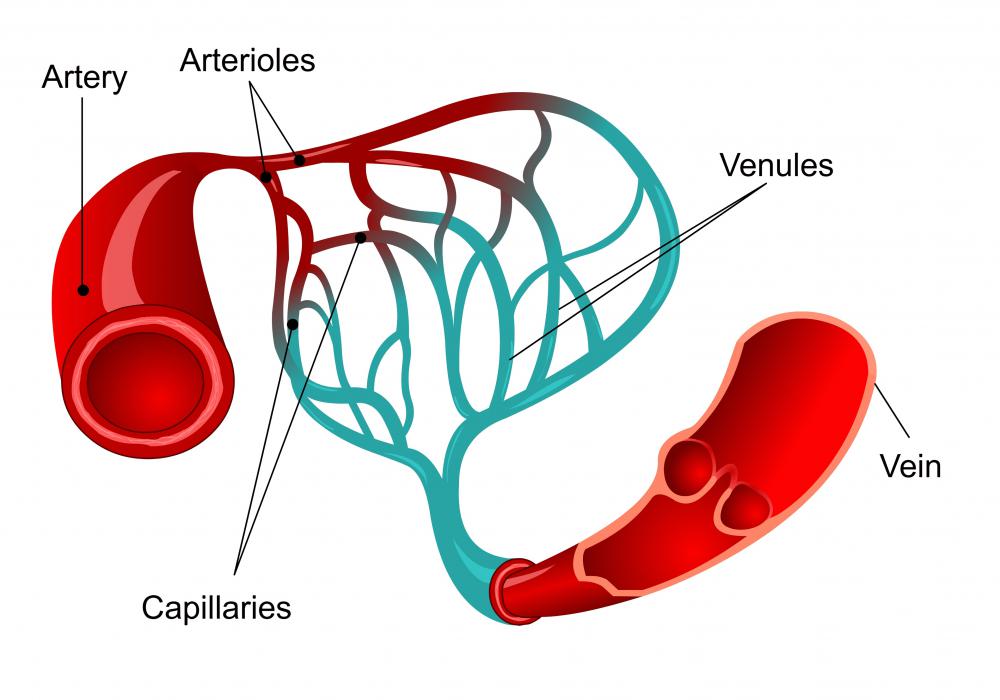At TheHealthBoard, we're committed to delivering accurate, trustworthy information. Our expert-authored content is rigorously fact-checked and sourced from credible authorities. Discover how we uphold the highest standards in providing you with reliable knowledge.
What is Carotid Artery Stenosis?
The carotid arteries, located in the neck, are the major source of oxygen-rich blood flow to the brain. Carotid artery stenosis (CAS) occurs when these arteries become thick and more narrow, hence cutting off some of this necessary blood supply. While mild carotid artery stenosis occurs in most people as they age, the greater the blockage, the more chance that those affected will suffer a stroke or a transient ischemic attack (mini-stroke).
Carotid artery stenosis can be a result of one or several factors. Plaque from cholesterol and fats can accumulate in the artery, creating a narrower pathway for blood flow. High levels of platelets in the blood can also form clotting in the arteries, blocking the path.

When a stroke is caused by artery stenosis, usually the artery has narrowed and platelets have accumulated at the narrow point to form a clot. As blood builds up behind the clot, the clot can eventually be passed into the brain. Additionally, the clot prevents blood from getting to the brain, and flow interruption, even if temporary, kills brain cells and can impair brain function.

It is estimated that of the 600,000 strokes occurring each year in the US alone, approximately one fourth to one half are caused by carotid artery stenosis. Therefore, early detection and treatment could help prevent 150,000-300,000 strokes each year in the US. Detection and treatment of CAS depends on symptoms and the degree to which the carotid arteries are narrowed.

In some cases, during one's yearly medical exam, the physician will hear a sound called a bruit when using a stethoscope. If a bruit is noted, the patient will likely undergo a Doppler ultrasound of the carotid artery to confirm stenosis. When carotid artery stenosis is detected, further tests are performed to evaluate the degree of stenosis.
Angiograms or catheterizations use contrast dye to outline and measure stenosis. Magnetic resonance imaging (MRI) and computer tomography (CT scan) may also be used. For patients with pacemakers, MRIs are contraindicated because they can interrupt the pacemaker's signals, and angiograms have some risk of stroke. One noninvasive test, oculoplethysmography, evaluates blood pressure in each eye and can show if significant blood flow to the eye is affected by carotid artery stenosis.

Unfortunately, the first symptom of carotid artery stenosis may be impaired brain function, a mini-stroke, or a full stroke. Yearly physical exams can help with early detection and are therefore advised. Patients with significant family history of CAS or strokes should inform their physicians. Smokers and the obese have a higher risk of CAS and should be monitored. Those with high cholesterol counts are also at risk.
If CAS is present but blocking less than 50% of the artery, treatment includes reducing risk factors for further stenosis, like smoking cessation, lower fat diets, and prescribed exercise. These are generally combined with taking an anti-coagulant such as aspirin. The dose is very low, essentially a "baby" aspirin (81 mg) per day.
Other anti-coagulants, like warfarin, may also be prescribed. Risk factors with warfarin can include excessive bleeding and bruising. Those who take warfarin are closely monitored via blood tests and have certain dietary restrictions.
When carotid artery stenosis is greater than 50%, several strategies may be employed to treat it. Carotid endarterectomy is a surgical procedure in which the surgeon opens the artery and clears out plaque formation and blockages. With no complications, most receiving this surgery will be out of the hospital in a few days. The effects of endarterectomy last for up to 20 years and significantly decrease the risk factors for stroke.
In some cases, when the risk of general anesthesia is too great, cardiologists perform a carotid angioplasty. This involves inserting a catheter, generally through an artery in the thigh, and threading it to the narrowed section of the carotid artery. Once there, a balloon attached to the catheter is inflated to open the artery.
After balloon inflation, a hollow metal tube called a stent is placed to keep the artery open. The advantage of this method is that it is not performed under general anesthesia; patients are usually conscious during the procedure and go home a few hours later. However, this is a relatively new procedure and long-term results are not available.
Since carotid artery stenosis can cause such serious health risks, it's advisable to follow a plan for preventing rather than curing it. Exercise, sensible diet and not smoking are all ways to reduce building plaque in the arteries. Yearly check-ups can also help catch stenosis in early stages, so the focus can be on fairly simple changes in behavior to avoid progression.
AS FEATURED ON:
AS FEATURED ON:














Discuss this Article
Post your comments